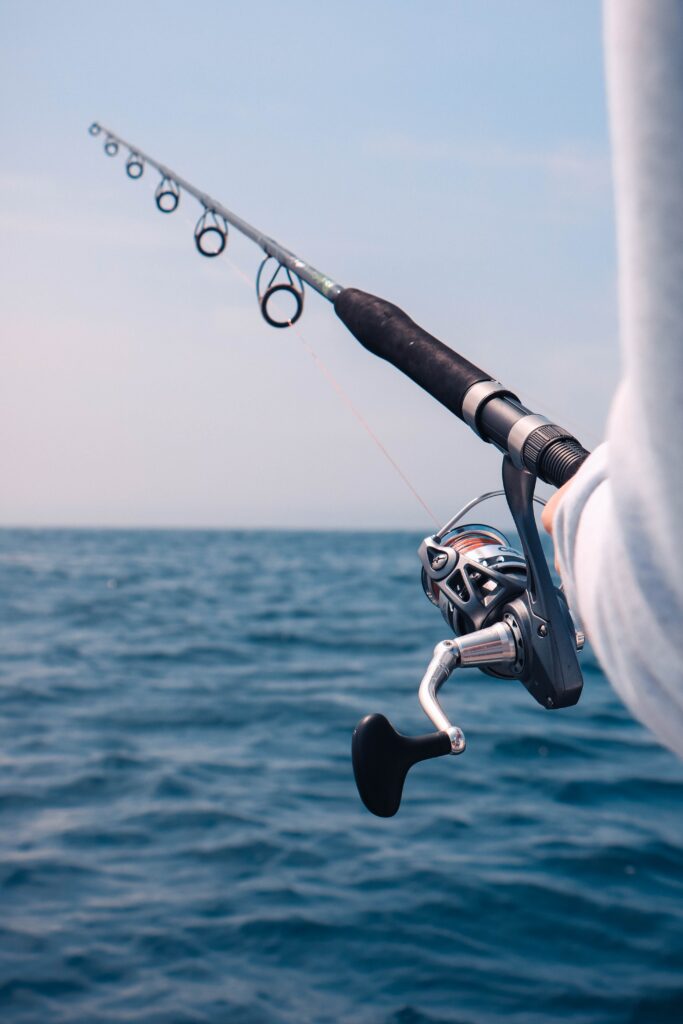Are you a novice fisherman eager to improve your casting skills? Look no further than “A Guide To Casting Techniques For Novice Fishers.” This comprehensive guide is designed to help beginners master the art of casting, providing step-by-step instructions and valuable tips. Whether you’re trying to land the perfect catch or simply looking to enhance your fishing experience, this guide will equip you with the knowledge and techniques necessary to become a confident and successful angler. Say goodbye to tangled lines and failed casts, and get ready to reel in your next big fish with ease.
Casting Basics
Fishing is not just about dropping a line in the water and waiting for a bite. It requires skill, technique, and knowledge of different casting techniques to effectively reach and attract fish. Whether you’re a beginner or an experienced angler, understanding the basics of casting is essential for improving your success on the water.
Understanding the Rod and Reel
Before diving into casting techniques, it is crucial to familiarize yourself with the essential components of your fishing gear. The rod and reel are the two fundamental tools you’ll use to cast your line. A fishing rod provides the flexibility and strength needed to propel the line forward, while the reel holds and releases the fishing line.
Grip and Stance
When it comes to casting, having the proper grip and stance can make a world of difference. A secure grip on the rod ensures control and accuracy during the cast. Hold the rod with your dominant hand, placing your thumb on top and the rest of your fingers underneath. As for your stance, stand in a balanced and relaxed position, with your feet shoulder-width apart and your weight evenly distributed.
Casting Motion
The casting motion is the key to propelling the line forward and presenting your bait or lure in the desired fishing spot. The motion involves a combination of wrist, arm, and body movements. To execute a smooth and efficient cast, begin by slowly bringing the rod backward, loading it with energy. Then, swiftly and smoothly move the rod forward, releasing the line at the desired point.
Types of Casting Techniques
There are numerous casting techniques available, each designed for specific fishing scenarios and target species. By understanding and mastering these techniques, you can adapt your casting approach to different conditions and increase your chances of reeling in that prized catch.
Overhead Cast
The overhead cast is one of the most commonly used casting techniques. It works well in open areas where there are no obstacles overhead. Start by raising the rod tip behind you, then swiftly bring it forward in a straight line, releasing the line at the desired point. The overhead cast allows for maximum distance and accuracy, making it a versatile technique for various fishing situations.
Sidearm Cast
The sidearm cast is particularly useful when fishing in tight spaces or areas with low hanging obstacles. Instead of raising the rod tip overhead, this technique involves casting the line to the side. Keep your hand slightly higher than your shoulder and smoothly sweep the rod forward in a horizontal motion. The sidearm cast allows you to precisely place your bait or lure where you want it, even when there are obstacles nearby.
Roll Cast
The roll cast is an excellent technique for fishing in rivers or streams with limited backcasting space. Instead of bringing the rod backward, you simply roll the line and fly in a circular motion on the water’s surface. As the line rolls out, you can direct it to the desired location. This technique is especially useful for presenting your bait in tight spots or when dealing with strong currents.
Pitch Cast
The pitch cast is perfect for fishing in close quarters, such as near cover or structure. It involves a shorter, more controlled cast that allows you to accurately place your bait or lure in tight spots. To execute a pitch cast, hold the rod parallel to the water’s surface, swing your arm forward, and release the line just before the lure hits the water. This technique minimizes disturbance and increases your chances of enticing nearby fish.
Flipping and Pitching
Flipping and pitching are two similar techniques used when fishing around heavy cover, such as bushes, docks, or fallen trees. Flipping involves releasing the line with a flick of the wrist, allowing the bait to drop straight down into the desired spot. On the other hand, pitching involves a more forceful cast, propelling the bait slightly farther away. These techniques excel in situations where stealth and precision are crucial for enticing hidden fish.
Underhand Cast
The underhand cast is a versatile technique that works well for both short and long distances. It involves a low, smooth swing of the rod, propelling the line forward in an underhand motion. This technique is ideal for vertical presentations or situations where you need to keep your line closer to the water’s surface. By mastering the underhand cast, you can effectively target fish in shallow waters or when fishing from a boat.
Sling Shot Cast
The sling shot cast is a specialized technique used for accuracy and precision casting. It involves using the tension between the rod and line to propel the bait or lure precisely where you want it. To execute a sling shot cast, hold the rod horizontally with the lure in hand. Next, pull the line back against the rod, creating tension, and release it forward with a quick, snapping motion. This technique allows for quick and accurate casting, making it ideal for targeting specific spots or sight fishing.
Spey Cast
The spey cast is a specialized technique commonly used in fly fishing for casting large fly lines and heavy flies. It is particularly useful when dealing with obstacles behind you, such as trees or rocks. The spey cast involves loading the rod with energy by first swinging it backward, then quickly moving the line forward in a sweeping motion. This technique allows for long-distance casting and can effectively cover large stretches of water.
Bow and Arrow Cast
The bow and arrow cast is a unique technique used mainly in bow fishing, where anglers use bows to shoot fish. It involves no traditional rod and reel setup but utilizes the tension and flexibility of a bowstring to propel the arrow toward the target. The bow and arrow cast demand accuracy, timing, and precision. It is a thrilling and challenging technique that adds a whole new dimension to the sport of fishing.
Surf Casting
Surf casting is a specialized technique used for fishing from the shore in coastal areas. It involves casting beyond the surf and into deeper waters, targeting species that frequent nearshore areas. Surf casting requires a powerful casting motion, as you need to overcome the resistance from waves and strong currents. By utilizing the proper technique and selecting the right equipment, you can effectively cover a large fishing area and increase your chances of catching those elusive game fish.

Mastering the Overhead Cast
The overhead cast is a fundamental technique that every angler should master. It provides the foundation for many other casting techniques and allows for long-distance, accurate casting.
Setting Up the Rod and Reel
Before you begin casting, ensure that your rod and reel are properly set up. The reel should be securely attached to the rod, with the fishing line properly spooled onto the reel. Check the line for any tangles or knots, as these can affect your casting performance.
Gripping the Rod
Having a comfortable and secure grip on the rod is essential for executing a successful overhead cast. Hold the rod with your dominant hand, placing your thumb on top of the grip and the rest of your fingers underneath. Make sure your grip is firm but not overly tight, allowing for smooth rod movements during the cast.
Stance and Body Position
Maintaining a balanced and relaxed stance is crucial for a successful overhead cast. Stand with your feet shoulder-width apart, slightly staggered, and your weight evenly distributed. Keep your body relaxed and avoid any unnecessary tension, as it can affect the fluidity of your casting motion.
Powering the Cast
To generate enough power for a successful overhead cast, utilize a combination of wrist, arm, and body movements. Start by slowly bringing the rod backward, loading it with energy. Use your wrist and forearm to initiate the backward motion, gradually increasing the speed. As the rod reaches the desired angle behind you, swiftly bring it forward using a fluid motion, transferring the energy from your body to the rod.
Timing and Release
Timing is crucial when it comes to the overhead cast. To achieve maximum distance and accuracy, release the line at the precise moment the rod reaches its forward position. A well-timed release allows the line to unroll smoothly and evenly, propelling your bait or lure to the desired location. Practice your timing and experiment with different release points to find what works best for you.
By mastering the overhead cast, you can cover a wide range of fishing scenarios and present your bait or lure effectively. Practice regularly, and soon you’ll be casting with confidence and reeling in those trophy fish.
Perfecting the Sidearm Cast
The sidearm cast is a valuable technique that allows you to cast in tight spaces and navigate around obstacles. By mastering the sidearm cast, you can effectively target fish in areas where other casting techniques may be challenging to execute.
Choosing the Right Rod
Selecting a rod specifically designed for sidearm casting is paramount to your success. Look for a rod with a medium to fast action, as these rods provide the flexibility and power needed for accurate sidearm casts. Consider the length of the rod as well, as longer rods may be more challenging to maneuver in tight spaces.
Grip and Stance
To execute a successful sidearm cast, it is essential to have a proper grip on the rod and maintain the appropriate stance. Hold the rod with your dominant hand, placing your thumb on top of the grip and the rest of your fingers underneath. Keep your grip firm but not overly tight, allowing for precise control of the rod. As for your stance, stand with your feet shoulder-width apart and slightly staggered, providing a stable base for your casting motion.
Swinging Motion
The key to a successful sidearm cast lies in the swinging motion of the rod. Instead of bringing the rod tip overhead, keep it to the side at a slight angle. Smoothly swing the rod forward in a horizontal motion, utilizing your wrist and arm to generate the necessary power. The swinging motion should be fluid and controlled, beginning with a gentle backswing and accelerating as the rod moves forward.
Timing and Release
Timing is critical when executing a sidearm cast. Ensure that you release the line at the precise moment the rod reaches its forward position. A well-timed release allows the line to unroll smoothly and accurately, presenting your bait or lure in the desired location. Practice your timing and experiment with different release points to find the sweet spot.
Mastering the sidearm cast opens up a world of possibilities for fishing in tight spaces or areas with low hanging obstacles. Practice regularly, focus on developing a smooth swinging motion, and soon you’ll be delivering your bait or lure with precision.

Mastering the Roll Cast
The roll cast is a valuable technique, especially when fishing in rivers or streams with limited backcasting space. By mastering the roll cast, you can effectively present your bait or lure in tight spots and navigate challenging fishing conditions.
Understanding the Roll Cast
The roll cast is unique since it involves no traditional backcast. Instead, it utilizes the conditions of the water’s surface to load and unload the rod, propelling the line forward. By rolling the line on the water’s surface, you can direct your bait or lure precisely where you want it.
Setting Up the Rod and Reel
Before attempting the roll cast, ensure that your rod and reel are properly set up. Check the reel for any tangles or snags that could impede the line’s smooth release. Make sure that the fishing line is adequately spooled onto the reel, with no twists or knots that could affect the cast.
Grip and Stance
Having a proper grip on the rod and maintaining the appropriate stance is crucial for executing a successful roll cast. Hold the rod with your dominant hand, placing your thumb on top of the grip and the rest of your fingers underneath. Keep your grip firm but not overly tight, allowing for precise control of the rod. As for your stance, stand with your feet shoulder-width apart and your weight slightly forward, ensuring a stable base for the casting motion.
Loading and Unloading the Rod
The roll cast relies on the loading and unloading of the rod as it interacts with the water’s surface. To load the rod, begin by slowly bringing it backward, with the rod tip just above the water. As you feel the tension build in the rod, stop the backward motion and wait for the line to roll out on the water. This loading motion stores energy in the rod, which is then released by smoothly swinging the rod forward in a sweeping motion.
Timing and Release
Timing is crucial when executing a roll cast. To achieve maximum accuracy, release the line at the precise moment the rod reaches its forward position. A well-timed release allows the line to unroll smoothly and precisely, presenting your bait or lure in the desired location. Practice your timing and experiment with different release points to find what works best for you.
By mastering the roll cast, you can effectively fish in tight spaces, navigate challenging fishing conditions, and present your bait or lure precisely where you want it. Practice regularly and focus on developing a smooth loading and unloading motion, and soon you’ll be roll casting with confidence.
Learning the Pitch Cast
The pitch cast is a technique frequently used in fishing scenarios where precise and accurate casting is crucial. By mastering the pitch cast, you can effectively target fish in close quarters, such as near cover or structure.
Basics of Pitch Casting
The pitch cast is a short and controlled cast that allows you to accurately place your bait or lure in tight spots. Primarily used when fishing in heavily vegetated areas or around submerged structures, the pitch cast minimizes disturbance and increases your chances of enticing nearby fish. It involves a more vertical presentation, allowing your bait or lure to drop vertically into the desired spot.
Choosing the Right Lure or Bait
Selecting the appropriate bait or lure is essential for a successful pitch cast. Opt for compact and weedless options that are less likely to get snagged or tangled in vegetation or structure. Texas-rigged soft plastics, jigs, or spinnerbaits are just a few examples of lures that excel in pitch casting scenarios.
Grip and Stance
Having a comfortable and secure grip on the rod, along with the appropriate stance, is crucial for executing a successful pitch cast. Hold the rod with your dominant hand, placing your thumb on top of the grip and the rest of your fingers underneath. Keep your grip firm but not overly tight, allowing for precise control of the rod. As for your stance, stand with your feet shoulder-width apart and your weight slightly forward, providing a stable base for the pitching motion.
Pitching Motion
To execute a pitch cast, hold the rod parallel to the water’s surface and position the bait or lure in your non-dominant hand. Swing your arm forward, simultaneously releasing the line with a flick of the wrist. Aim for a controlled and accurate release, allowing the bait or lure to drop vertically into the desired spot. Practice your pitching motion, adjusting the speed and angle of release to achieve maximum accuracy.
Accuracy and Distance
The pitch cast is all about delivering your bait or lure with accuracy and precision. Focus on your target and aim to land your presentation as close to it as possible. With practice, you’ll develop a better sense of distance and be able to pinpoint specific spots with ease. Remember, accuracy is crucial when fishing in tight spaces, and refining your pitch casting technique will undoubtedly lead to more successful fishing experiences.
By mastering the pitch cast, you can effectively target fish in close quarters and increase your chances of success when fishing around cover and structure. Practice regularly, experiment with different lures, and fine-tune your pitching motion, and soon you’ll be presenting your bait or lure with precision.

Flipping and Pitching
Flipping and pitching are two specialized casting techniques used when fishing in dense cover or areas with limited space. By mastering these techniques, you can effectively target fish hiding in heavy vegetation, under docks, or around fallen trees.
Differentiating Flip and Pitch
While flipping and pitching are often used interchangeably, there are subtle differences between the two techniques. Flipping involves releasing the line with a flick of the wrist, allowing the bait or lure to drop straight down into the desired spot. On the other hand, pitching involves a more forceful cast, propelling the bait or lure slightly farther away. Both techniques minimize disturbance and maximize stealth when fishing around cover.
Setting Up the Tackle
To execute successful flipping and pitching casts, it is essential to have the appropriate tackle. A heavy or medium-heavy rod with a fast action is ideal for flipping and pitching, as it provides the necessary backbone and sensitivity for battling fish in close quarters. Pair the rod with a low-profile baitcasting reel filled with a strong braided line, which offers increased strength and minimal line stretch.
Grip and Stance
Having a comfortable and secure grip on the rod, along with the appropriate stance, is crucial for executing successful flipping and pitching casts. Hold the rod with your dominant hand, placing your thumb on top of the grip and the rest of your fingers underneath. Keep your grip firm but not overly tight, allowing for precise control of the rod. As for your stance, stand with your feet shoulder-width apart and your weight slightly forward, providing a stable base for the flipping and pitching motion.
Flipping Technique
The flipping technique involves presenting your bait or lure by dropping it straight down into the desired spot. To execute a successful flip, start by holding the rod parallel to the water’s surface, with the bait or lure in your non-dominant hand. Release the line with a flick of the wrist, allowing the bait or lure to drop vertically. Pay close attention to the line as it descends, as this can provide valuable feedback on potential bites.
Pitching Technique
The pitching technique is a more forceful cast that propels the bait or lure slightly farther away. To execute a successful pitch, hold the rod parallel to the water’s surface, with the bait or lure in your non-dominant hand. Swing your arm forward forcefully, simultaneously releasing the line with a flick of the wrist. The pitching technique allows you to cover slightly more distance than flipping and can be particularly useful when trying to reach targets just beyond your reach.
By mastering flipping and pitching, you can effectively fish in dense cover and tight spaces, increasing your chances of enticing fish hiding in those hard-to-reach spots. Practice regularly, experiment with different lures, and refine your flipping and pitching techniques, and you’ll soon be extracting fish from the thickest cover with confidence.
Exploring the Underhand Cast
The underhand cast is a versatile casting technique that can be used in a variety of fishing scenarios. Ideal for both short and long distances, the underhand cast offers precise and accurate presentations and is particularly effective in shallow waters or when fishing from a boat.
Understanding Underhand Casting
The underhand cast involves a low, smooth swing of the rod, propelling the line forward in an underhand motion. This technique allows for a more vertical presentation, making it useful in scenarios where you need to keep your line closer to the water’s surface. With a well-executed underhand cast, you can effectively target fish in shallow waters, such as when sight fishing for species like redfish or bonefish.
Gripping the Rod
Having a comfortable and secure grip on the rod is crucial for executing a successful underhand cast. Hold the rod with your dominant hand, placing your thumb on top of the grip and the rest of your fingers underneath. Maintain a firm but not overly tight grip, allowing for precise control of the rod during the casting motion.
Stance and Body Position
Maintaining a balanced and relaxed stance is essential for a successful underhand cast. Stand with your feet shoulder-width apart and slightly staggered, providing a stable base for your casting motion. Keep your body relaxed and avoid any unnecessary tension, as this can affect the fluidity and accuracy of your casting technique.
Casting Technique
To execute an underhand cast, start with the rod tip low, near or just above the water’s surface. With a smooth and controlled motion, swing the rod forward in an underhand motion. Utilize your wrist and forearm to generate the necessary power for an accurate cast. Release the line when the rod reaches its forward position, allowing the line to unroll smoothly and present your bait or lure precisely where you want it.
Avoiding Common Mistakes
When learning the underhand cast, it is essential to be aware of and avoid common mistakes. One common error is overpowering the cast, which can result in the line tangling or the bait or lure landing too forcefully, potentially spooking the fish. Focus on developing a smooth and controlled casting motion to maximize accuracy and presentation. Another common mistake is releasing the line too late or too early, affecting the line’s unrolling and the overall effectiveness of the cast. Practice your timing and experiment with different release points to achieve optimal results.
By mastering the underhand cast, you can effectively target fish in shallow waters or when fishing from a boat. Practice regularly, focus on developing a smooth and controlled casting motion, and soon you’ll be delivering your bait or lure with precision.

Trying the Sling Shot Cast
The sling shot cast is a valuable casting technique that allows for quick and accurate presentations. It is particularly useful when you need to cast with precision and reach specific spots or targets.
Overview of Sling Shot Casting
The sling shot cast utilizes the tension between the rod and line to propel the bait or lure precisely where you want it. It involves pulling the line back against the rod, creating tension, and then releasing it forward with a quick, snapping motion. This technique offers excellent accuracy and is particularly useful when targeting specific spots or sight fishing for elusive species.
Setting Up the Rod and Reel
Before attempting the sling shot cast, ensure that your rod and reel are properly set up. Check the reel for any tangles or snags that could affect the line’s smooth release. Make sure that the fishing line is adequately spooled onto the reel, with no twists or knots that could impede the cast.
Holding and Aiming
To execute a successful sling shot cast, position the rod parallel to the water’s surface and hold it with your dominant hand. Rest your thumb on top of the grip, providing stability and control. Aim your rod toward the target and position your non-dominant hand near the reel, ready to release the line.
Casting Motion
To initiate the sling shot cast, pull the line back against the rod, creating tension. This tension serves as the power source for the cast. As you release the line forward, snap your wrist quickly, propelling the bait or lure toward the target. The key to a successful sling shot cast is a quick, snappy motion that transfers the tension into forward momentum. Practice your casting motion, focusing on achieving both accuracy and distance.
Common Challenges
While the sling shot cast offers excellent accuracy and presentation, it does come with a few challenges. One common issue is releasing the line too early or too late, resulting in an inaccurate or ineffective cast. Practice your timing and experiment with different release points to find what works best for you. Another challenge is applying too much force, which can cause the line to tangle or the bait or lure to land too forcefully. Focus on developing a quick, snappy casting motion that maximizes accuracy without overpowering the cast.
By experimenting with the sling shot cast and practicing regularly, you can effectively reach specific targets and increase your chances of enticing those hard-to-reach fish. Keep refining your technique, adjust your aim, and soon you’ll be hitting the bull’s eye every time.
Mastering Surf Casting
Surf casting is a specialized casting technique used by shore anglers looking to target species that frequent nearshore areas. It requires skill, experience, and specialized equipment to effectively present your bait or lure in the surf.
Introduction to Surf Fishing
Surf fishing is a popular and exciting form of angling that allows you to fish from the shoreline in coastal areas. Surf anglers target a wide range of species, including striped bass, redfish, snook, pompano, and many others. Surf fishing often involves casting beyond the breaking waves, reaching deeper waters where these species often feed.
Selecting the Right Rod and Reel
To effectively surf cast, you need specialized equipment that can handle the challenging conditions of the surf. Look for a surf casting rod, usually longer and more robust than traditional rods, designed to handle heavy lines and heavy-duty reels. The reel should have a large line capacity to accommodate the long distances often required for surf fishing. Pair the rod and reel with a heavy-duty fishing line that can withstand the abrasive nature of the surf, such as braided or monofilament lines.
Casting from the Shore
Surf casting requires a powerful casting motion that can overcome the resistance from waves and strong currents. Stand with your feet shoulder-width apart and face the water. Hold the rod with your dominant hand, placing your thumb on top of the grip and the rest of your fingers underneath. Bring the rod backward in a smooth and controlled motion, loading it with energy. As the rod reaches its backward limit, smoothly accelerate it forward, releasing the line at the desired point. The casting motion should be powerful and fluid, ensuring that your bait or lure reaches the desired location.
Accounting for Wind and Waves
When surf casting, it is essential to consider the influence of wind and waves on your casting technique. Wind can affect the accuracy and distance of your cast, so practice casting into the wind to gauge its impact. Adjust your casting angle and power accordingly to compensate for varying wind conditions. Additionally, waves can make it challenging to present your bait or lure effectively. Watch the rhythm of the waves and time your casts to coincide with the lull between sets, maximizing your chances of reaching the desired fishing spot.
Retrieving Techniques
Once your bait or lure is in the water, the way you retrieve it plays a significant role in enticing fish to bite. Experiment with different retrieval techniques, such as slow and steady, fast and erratic, or a combination of both. Vary the speed, depth, and direction of your retrieves to mimic the natural movements of the prey species you’re targeting. Pay attention to any signs of fish activity, such as birds diving or baitfish jumping, and adjust your retrieval technique accordingly.
Mastering surf casting takes time and practice, but with dedication and the right equipment, you can effectively target a wide range of species found in nearshore areas. Familiarize yourself with the surf conditions, experiment with different casting angles and power, and refine your retrieval techniques. Before you know it, you’ll be reeling in trophy fish from the surf with confidence.
As an aspiring angler, understanding and mastering various casting techniques is essential for maximizing your success on the water. By familiarizing yourself with the basics of casting, exploring different techniques, and dedicating yourself to practice, you can become a skilled and versatile angler with the ability to adapt to various fishing scenarios. So grab your gear, hit the water, and embark on an exciting journey of mastering the art of casting. Good luck and tight lines!






